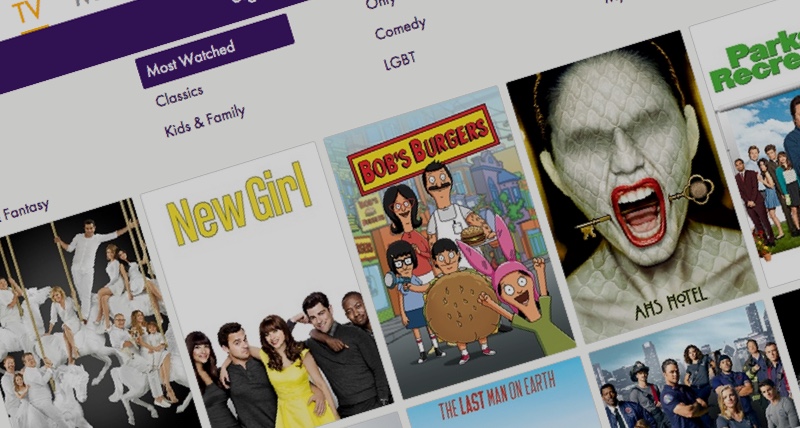The Real Reason Shomi Died: Inside the Collapse of Canada’s Netflix
This weekend, Canadian tech site Mobile Syrup published a deep dive into the death of Shomi, Rogers and Shaw’s now-deceased Netflix-killer. Called “Behind the scenes of Shomi’s shutdown: Is this the next stage of Hollywood North?“, the piece is a wandering look at the business of digital media in Canada, as well as the CanCon industry itself, often conflating the two to disastrous effect.
Mobile Syrup interviewed former Shomi employees about the company’s last days, curiously deciding to change their names to protect their privacy.
The story describes Shomi’s demise as “another knock out in [Canada’s] longstanding, yet one-sided, rivalry with the American entertainment machine.” They further sound the alarm with headings like these:
When it comes to culture, Canada is the baby of the family
A new phase of struggling Canadian entertainment
Canada caught between a cultural deficit and a financial risk
By their measure, Shomi’s collapse is one of culture and not business.
This is wrong. The failure of this business is not a red flag for arts and culture in Canada, or even for our entertainment industry — which yes, are two distinct entities. It’s important to separate the business of distribution from the act of making content itself. That line is blurring as media companies in this country consolidate under fewer corporate umbrellas. But Shaw and Rogers, the massive TV-internet-phone conglomerates, are not Canadian culture, and it’s incorrect to assume as much.
While the decision to close Shomi was surprising, it did not come without warning. Earlier this year Rogers began bundling Netflix subscriptions into its other product offerings. And in August, Shomi’s budgets were slashed, forcing layoffs to the company’s 100-person staff, Mobile Syrup reported.
In a survey this summer, only 4 per cent of Canadian households, less than 500,000, said they were actively using Shomi. Compare that to the 46 per cent of households using Netflix right now. As well, the American service is estimated to have added another million subscribers in Canada this year. Eventually, someone decided, this gap was just too big to make up.
Netflix arrived here in 2010, a full four years ahead of Shomi’s launch. And when the company launched video-on-demand streaming back in 2007, Rogers was still pushing its pay-per-view movie service, Rogers On Demand. Still, it took Netflix years to accumulate a credible catalog in this country. Perhaps Shomi could have competed if they had launched in, say, 2012 instead of 2014.
Mobile Syrup talked to Brenda Leadlay, the executive director of the B.C. Alliance for Arts and Culture, who suggested that if Canadian content and services cannot compete, rules should be put in place to ensure they can.
“Leadlay believes that awareness of Canadian content and services should be prioritized over the organic consumer market. She compares it to the colour-blind casting movement taking place in the performing arts world. If Canadian services can’t catch up to the strength of American movements, putting rules in place is the only way to ensure their use.”
That is… That is a joke. That is absolutely insane.
According to Diane Rowe (again, not her real name), a former member of Shomi’s marketing department, the company struggled with the number of customers who left the service.
From Mobile Syrup: “She and her team struggled with their churn rate — the amount of customers that eventually left Shomi for another streaming platform.” That is to say, people were unsatisfied with the product and so they didn’t use it. The problem with Leadlay’s argument is that these products are not equal. Imagine forcing people to use an inferior, Canadian-made Instagram clone. Why would anyone use that? Leadlay, herself, admits she already had a Netflix account when Shomi was added to her Rogers bundle. Right, of course she did.
Building digital products is hard, a task made even more difficult when competing against the talent and money of Silicon Valley.
Mobile Syrup estimates that Rogers and Shaw spent over $364 million on Shomi in 2016, while generating just $92 million in revenue. Amazon, which just launched Prime Video in Canada this month, spent more than $3 billion (USD) in 2015. Prime Video isn’t even their core business. It’s essentially an incentive offer for its express delivery program. While it’s unclear what kind of impact Prime Video has had in Canada, the service is better positioned to succeed than Shomi was, if only because the definition of success is radically different for a giant like Amazon.
Jean-Pierre Blais, the Chairman of the CRTC, was critical of the decision to close down Shomi. In a keynote talk at the annual Canadian Chapter of the International Institute of Communications conference he said:
“I can’t help but be surprised when major players throw in the towel on a platform that is the future of content — just two years after it launched. I have to wonder if they are too used to receiving rents from subscribers every month in a protected ecosystem, rather than rolling up their sleeves in order to build a business without regulatory intervention and protection.”
So yes, Shomi represented an opportunity to push Canadian media into the future – hell, depending on how young you are, just into the present. Rogers, for its part, decided to double down on its traditional TV strategy, cable bundles anchored by live sports events. In 2013 they bid $5.3 billion for the rights to the NHL in Canada, a deal which has not necessarily worked out for them. Could some of that money been funnelled into Shomi? For Shaw, they always seemed to be punching above their weight with a service like this. The problem is that cable TV is a demographic time bomb. Even sports, once the holy grail of TV packages, has seen declining ratings over the last few years. The NFL, in particular, was hit with an unprecedented drop in viewership this season.
Shomi was not a Canadian cultural product, but rather a business venture built primarily off American content. The company’s failure is not a consequence of Canada’s middling culture industry, but due instead to a lack of investment and Canadian telecoms’ inability to realize a key business opportunity. If they had beat Netflix into Canada, where would that service be today?










